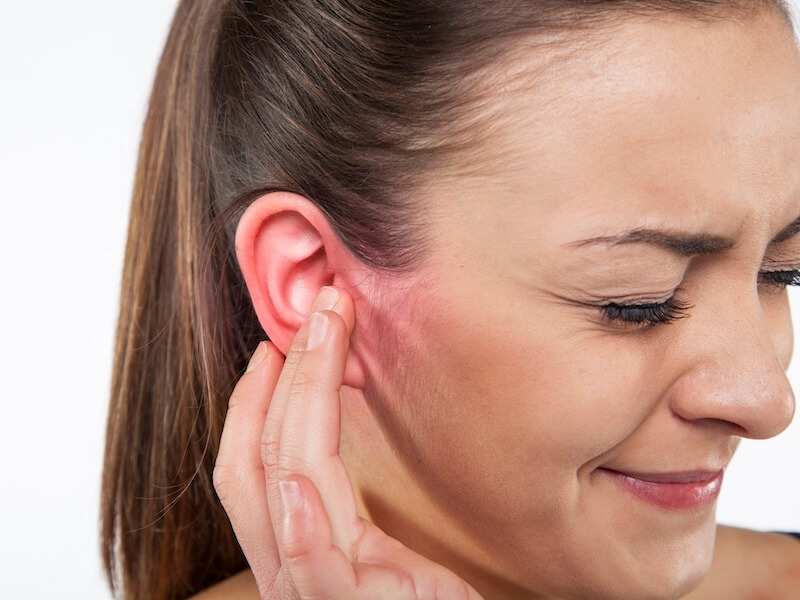
Surprisingly, around 20% of all ear infections happen to adults. Most individuals think of ear infections as a childhood illness, something that affects primarily young kids. Ear infections are definitely more common in kids but adults do get them too.
Ear infections can be especially unpleasant for people with hearing loss because they can interfere with their hearing aids. Additionally, when hearing aids aren’t properly maintained, they can become a vector for ear infection-causing diseases.
So, you might be wondering: Can I use hearing aids while I have an ear infection? In general, the answer is yes, but you may not want to. Ear infections can cause considerable swelling and discomfort in the ear, and your hearing aids may worsen those symptoms. However, there are some steps that people who use hearing aids can take to help avoid and treat ear infection symptoms.
Can an ear infection be caused by hearing aids?
If you’re an adult with hearing impairment and you begin to notice the symptoms of an ear infection, you may begin to wonder: did my hearing aids cause this ear infection? The technical answer is no. But more nuance is required to understand the whole story.
The vast majority of all ear infections are caused by viruses or bacteria that then infect the inner ear. There are a wide variety of vectors that can result in infection. In some cases, the inner ear becomes infected after a past illness (for example, a sinus infection or a cold). In other cases, fluid accumulation may result in an infection. It’s also entirely possible that a virus or bacteria directly infected the inner ear by physical transmission.
This can occur with some frequency to individuals who wear hearing aids. The virus or bacteria latches onto your hearing device and, when inserted, gains access to the inner ear. Correct hearing aid cleaning and maintenance is essential for this reason. So the virus or bacteria is actually the cause of the infection, not the hearing aid itself. But your device could play a role in transmission.
How ear infections interact with hearing aids
So what is the degree of interaction between hearing aids and ear infections? To understand what to expect, it’s useful to look at the most prevalent symptoms of an ear infection. Here are a few of the most common symptoms of ear infections:
- Inflammation and swelling
- Ringing in the ears (tinnitus)
- A feeling of fullness or pressure in the ears
- Fluid draining from the ear
- Temporary loss of hearing in some cases
- Vertigo or dizziness
- Pain in the ear
Obviously, everybody will experience the symptoms in their own way. In most circumstances, your infected ear will be painful and there will most likely be noticeable inflammation around the inner ear. For people with hearing loss, these symptoms can interact unfavorably with your hearing aids. That’s because your hearing aid will most likely (at least in part) sit within the ear canal. Because the ear canal is inflamed and tender, your hearing aids may cause additional discomfort.
Also, with a hearing aid that sits primarily inside the ear canal, fluid drainage can be blocked. Your infection and discomfort may last longer if fluid is trapped in your ear. The pain and pressure in your ears will be increased because of this. This pressure can be even more marked when you’re wearing your hearing aid.
This increased moisture can also impair the function of your hearing aid. So your ears are in more pain and your hearing aid doesn’t really work as well as it should. Which means that wearing hearing aids when you have an ear infection can be a downright miserable time.
Solutions to wearing hearing aids with an ear infection
So what can you do if your hearing aids are bothering you during an ear infection? You can lower your risk of getting an ear infection and address any discomfort that an ear infection might cause by taking a few steps. Those steps include the following:
- Practice good ear hygiene: It’s important to keep your ears clean and dry and regularly clean your outer ear. Do not try to stick any object in your ear, however, including cotton swabs. Using cotton swabs can drive earwax and other debris further into your ear, increasing your chance of developing an infection. You’re attempting to accomplish the exact opposite.
- Talk to your hearing specialist: Consider coming in to have your hearing aid re-fit if your ear infection clears but your hearing aid is still not comfortable.
- Talk to your healthcare provider: You should speak with your doctor sooner than later if you think you might be developing an ear infection. Treating a hearing aid as soon as possible will decrease the risk of it becoming severe or prolonged.
- Regularly clean your hearing aids: Keeping your device clean can decrease the risk of transferring bacteria or viruses to your ears. Ask us for help if you’re not certain how to correctly clean and sanitize your hearing aids.
- Take breaks from wearing your hearing aids: You can take a break from your hearing aids for a while if you have severe or persistent pain. You can use alternative methods of communication with family and friends, like texting, in the meantime.
Hearing aids are likely a crucial part of your daily life. They help you communicate with loved ones and move about the world more easily. That makes it very difficult to give up your hearing aid even for short periods. However, you will have a quicker recovery from your ear infection if you take a break from wearing them until you heal up. That means you can get back to enjoying what you hear faster.
Ear infections are relatively common. But you should still get treatment if you notice symptoms. Contact us if you’re wondering how your hearing aid use will be impacted by an ear infection.
